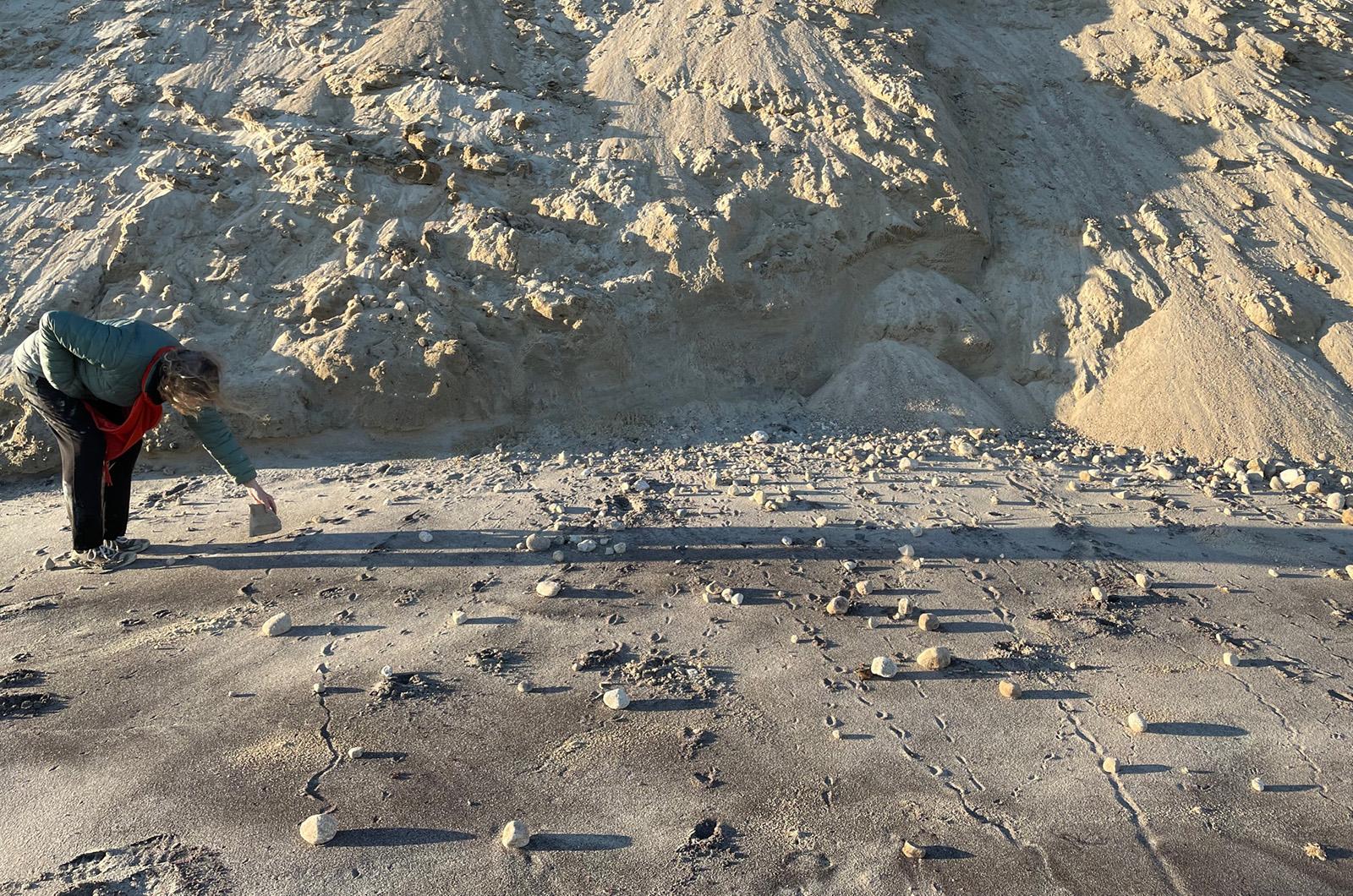Nancy Weaver, for more reasons than one, qualifies as a rock star. She observed and photographed a significant stone sensation last week.
Walking west of Lucy Vincent Beach, Nancy came upon an area of beach rocks that had left a trail or tracks behind them, similar to the contrails left in the air behind an airplane. She noted that she had never before seen these distinctive rock tracks.
Rocks generally stay put. You know the saying: steady as a rock. Sure, wind, water or another force might be able to move rocks, but would those methods leave the tracks in the sand that Nancy observed? Wind or water would wash out any evidence of movement, so this earned its standing as the first nature mystery of the new year.
Moving rocks that leave their own foot (or rock) print is a thing, though an unusual thing. Known as moving rocks, sailing stones, walking rocks and rolling stones, this phenomenon has been documented at only a few locations and, for a long time, has baffled scientists and others who have observed them.
The most famous area for this spectacle is Racetrack Playa at Death Valley National Park in California. There, rocks large and small have been moving long distances without any explanation. Generations of scientists have made hypotheses and it wasn’t until the 2000s that researchers got onto the right track. Their findings could inform the inquiry into those Lucy Vincent rambling rocks.
It takes a very specific balance of conditions to make rocks rove, including temperature, substrate (clay is good) and the presence of ice and wind. Rocks can roll and leave lines behind when sections of ice are driven by wind and push rocks that are below, in front of them, or stuck within them.
The deep freeze that we recently had could have created pieces of ice on the beach that captured or covered the beach rocks. As the ice melted, a thin layer of air between the sand and the ice might have formed. Then, winds pushed these ice masses. The rocks in the chunks — or in front of the ice — would be moved, and leave tracks.
Those ice sheets might also “jump” with a wind gust, which would explain gaps in the rock trails. These tracks are protected by the ice above from getting blown out by the winds pushing them. The ice melts and the trails remain. This premise has been called the ice raft theory.
Stones with rough bottoms seem to leave straight or striated tracks, while smooth-bottomed rocks will wander in a less-direct path. Rocks can also turn over and this will change their tracks accordingly.
Nancy captured a moment in time and was able to observe rock tracks that surely didn’t remain long. While we will never truly know how or why they appeared, this theory could line up a method to the madness. And while you may never witness stones in the actual act of moving, their nomadic nature will be clear when they draw their lines in the sand.
Suzan Bellincampi is Islands director for Felix Neck Wildlife Sanctuary in Edgartown and the Nantucket Wildlife Sanctuaries. She is also the author of Martha’s Vineyard: A Field Guide to Island Nature and The Nature of Martha’s Vineyard.







Comments (2)
Comments
Comment policy »